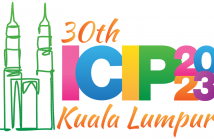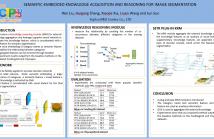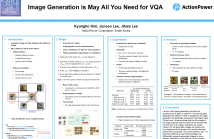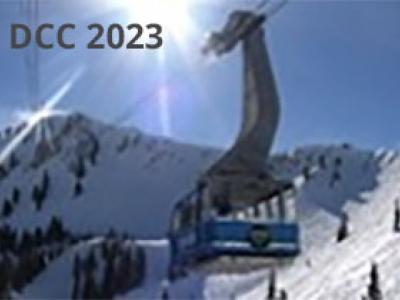- Image/Video Storage, Retrieval
- Image/Video Processing
- Image/Video Coding
- Image Scanning, Display, and Printing
- Image Formation

- Read more about Appendix
- Log in to post comments
To evaluate the generalization of RIS in the context of human-robot interaction, we generate referring expressions for a subset of images from GraspNet using Shikra.
Appendix.pdf
- Categories:
 9 Views
9 Views
- Read more about QVRF: A QUANTIZATION-ERROR-AWARE VARIABLE RATE FRAMEWORK FOR LEARNED IMAGE COMPRESSION
- Log in to post comments
Learned image compression has exhibited promising compression performance, but variable bitrates over a wide range remain a challenge. State-of-the-art variable rate methods compromise the loss of model performance and require numerous additional parameters. In this paper, we present a Quantization-error-aware Variable Rate Framework (QVRF) that utilizes a univariate quantization regulator a to achieve wide-range variable rates within a single model.
- Categories:
 42 Views
42 Views
- Read more about SEMANTIC-EMBEDDED KNOWLEDGE ACQUISITION AND REASONING FOR IMAGE SEGMENTATION
- Log in to post comments
Image segmentation is a difficult and challenging task because of the complex object appearance and diverse object categories. Traditional methods directly use visual features for segmentation but ignore the correlation between objects. We introduce a knowledge reasoning module (KRM) for external knowledge aggregation and leverage a graphic neural network to aggregate the knowledge feature, which is concatenated with a visual feature for semantic segmentation. To this end, we use word embedding of category names as semantic feature and establish the relationship between categories.
- Categories:
 23 Views
23 Views
- Read more about IMAGE SEGMENTATION FOR IMPROVED LOSSLESS SCREEN CONTENT COMPRESSION
- Log in to post comments
In recent years, it has been found that screen content images (SCI) can be effectively compressed based on appropriate probability modelling and suitable entropy coding methods such as arithmetic coding. The key objective is determining the best probability distribution for each pixel position. This strategy works particularly well for images with synthetic (textual) content. However, usually screen content images not only consist of synthetic but also pictorial (natural) regions. These images require diverse models of probability distributions to be optimally compressed.
- Categories:
 10 Views
10 Views
- Read more about Image Generation is MAY All You Need for VQA
- Log in to post comments
Visual Question Answering (VQA) stands to benefit from the boost of increasingly sophisticated Pretrained Language Model (PLM) and Computer Vision-based models. In particular, many language modality studies have been conducted using image captioning or question generation with the knowledge ground of PLM in terms of data augmentation. However, image generation of VQA has been implemented in a limited way to modify only certain parts of the original image in order to control the quality and uncertainty.
- Categories:
 79 Views
79 Views
- Read more about GROUP-WISE CO-SALIENT OBJECT DETECTION WITH SIAMESE TRANSFORMERS VIA BROWNIAN DISTANCE COVARIANCE MATCHING
- Log in to post comments
ICASSP海报.pdf
- Categories:
 11 Views
11 Views
- Read more about Compression Noise Reduction via Non-local Filtering with Rectified Regularity for Urban Building Scenes
- Log in to post comments
In this paper, we propose a novel low-rank based non-local image denoising method for HEVC video compression with the strategy of gathering non-local patches in the rectified domain. Owing to the irreversible quantization, image compression can be considered as adding noises into the original image, causing the distortion between the original image and the de-compressed image.
- Categories:
 38 Views
38 Views
- Read more about Image Compressed Sensing Using Auxiliary Information for Efficient Coding
- Log in to post comments
- Categories:
 25 Views
25 Views
- Read more about SPECIALISED VIDEO QUALITY MODEL FOR ENHANCED USER GENERATED CONTENT (UGC) WITH SPECIAL EFFECTS
- Log in to post comments
- Categories:
 15 Views
15 Views
- Read more about Meta Talk: Learning to Data-Efficiently Generate Audio-Driven Lip-Synchronized Talking Face with High Definition
- Log in to post comments
0 poster.pdf
- Categories:
 16 Views
16 Views